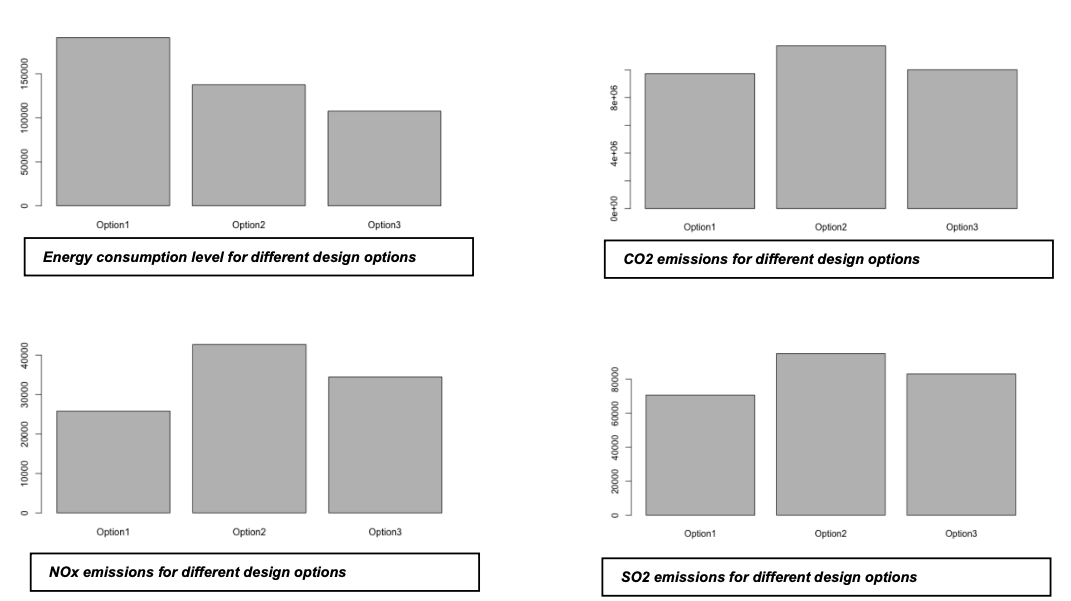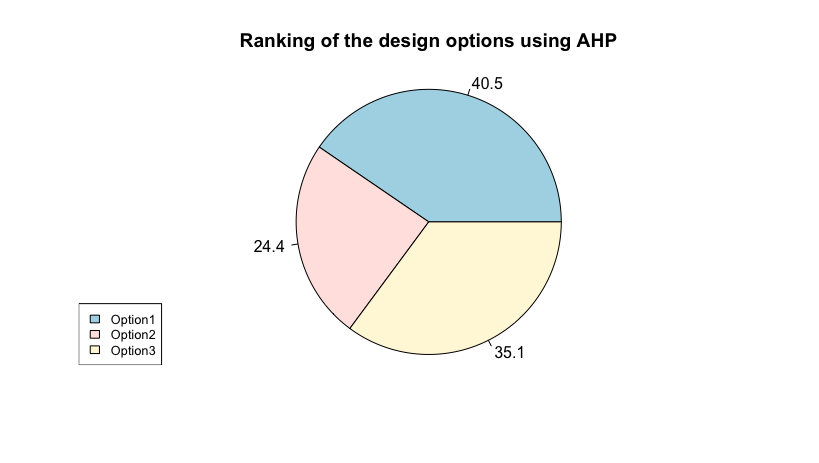Scope and Goals
The assessment includes a thorough examination of the materials used for sleepers, track beds and rails, tracking their impact from raw material extraction, manufacturing, and construction, through the operational phase and transportation, to end-of-life consideration. The energy and re- source consumption during extraction, production, construction processes such as track construction, energy consumption during operation of the railroad infrastructure and maintenance and repair work during the operating phase are examined.
Design Options
The design options represent different alternatives for sleepers and track bed.
The rail is chosen to be the S54 Rail. With ballasted track, a layer of crushed stones provides stability and load distribution and requires regular maintenance work such as tamping and reballasting.

In contrast, the slab track with asphalt consists of a concrete slab that supports the tracks. It offers lower maintenance requirements and potential noise reduction, especially with an additional asphalt layer. While ballasted tracks are initially cost-effective, slab tracks can result in lower maintenance costs in the long term.

The decision for one of the two options depends on factors such as terrain, noise regulations and budget.
Life Cycle Inventory of different materials, Performance, and Environmental indicators
The area of application describes the specific element under consideration, whereby PRC in this context refers to the prefabricated concrete sleeper. The quantities for most elements are predominantly given in kg/m3. In the case of asphalt, the proportion is 5% for asphalt cement and 95% for asphalt aggregates, which corresponds to the composition in 1 m3 of asphalt. Steel is shown with a quantity of 1, which means 1 kg of steel.
System Lifespan with Interventions
The representation of maintenance events, labeled “M”, is a quarterly recurring activity that applies to all design options. Partial replacement, indicated by “PR”, is scheduled every 5 years for all design options. For design option 1, complete re- placement of part of the track is scheduled every 10 years. For design option 2, this complete replacement is planned at a less frequent interval, namely once during 50 years. Similarly, in design option 3 a complete replacement takes place once during 60 years.
Life Cycle Inventory and Analysis
To simplify our calculations, we first calculate the energy consumption and emissions for a 1.2 meter long section of track. Considering that the distance between two sleep- ers is about 60 centimeters, with a concrete sleeper having a width of 30 centimeters and a wooden sleeper having a width of 26 centimeters, it follows that two concrete or wooden sleepers are used for a 1.2 meter long track. Consequently, the volume of the sleeper is multiplied by 2 in the code to take this doubling into account. In addition, a scaling factor is introduced into the volume for the sleeper option to ensure adaptability so that the sleeper volume is in proportion to the actual track length. The entire track under investigation has a length of 120 meters.
When looking at the results, it becomes clear that the first design option has a remark- ably high energy consumption, but the CO2, SO2 and NOX emissions are lower than for all other designs. In contrast, the second design option has the highest emissions, which can be attributed to the reinforcement and concrete elements as well as the ballast bed. It is worth noting that design option 3 is between design options 1 and 2 in terms of emissions but has the lowest energy consumption of the three alternatives.
MCDM – Analytic hierarchy process (AHP)
Using approximate values from 1 to 4 to represent the relationships between the criteria, based on observations and current literature, we found the following: The CO2 criterion is twice as important as energy consumption and three times as important as NOx and SO2 emissions. This reflects the current environmental policy that prioritizes CO2 reduction and the significant vol- ume of CO2 emissions compared to NOx and SO2. Energy consumption is about three times as important as NOx emissions and four times as important as SO2 emissions due to their interdependence. In the hierarchy, SO2 emissions are classified as twice as important as NOx emissions due to the slightly higher level of emissions.
The pie chart, which considers how important different factors are, gives the highest score to option 2. It’s strange because option 2 uses the usual concrete sleepers with a ballast track bed, even though many studies say there are better choices like recycled concrete sleepers. Surprisingly, de- sign option 3 for the slab track produces a lot more CO2 than the regular ballasted railway tracks.
References
Deutsche Bahn. (2007). Holzschwellen. Deutsche Bahn. https://www.deutsche- bahn.com/resource/blob/6893254/27406fd3f905620d1ecd3d7fc96baae9/DBS918144_V2_0_DE- data.pdf
Hansen et. Al. (2023). CO2-Emissionen beim Einbau: Feste Fahrbahn im Vergleich zum Schotteroberbau. https://www.static.tu.berlin/fileadmin/www/10002264/aktuel- les/2023/59_63_Hansen_etal.pdf
Federal Railroad Administration. (2011). Carbon Footprint of High-Speed Rail. UIC. https://railroads.dot.gov/sites/fra.dot.gov/files/fra_net/15009/Carbon%20Foot- print%20of%20High-Speed%20Rail%20UIC%202011.pdf
Rail One. (2024). Betonschwelle B70. Rail One. https://www.railone.de/produkte- loesungen/fern-gueterverkehr/schotteroberbau/betonschwelle-b70
SSF International. (n.d.). Slab track systems. SSF International. https://www.ssf- int.com/fileadmin/web_data/Downloads/Broschueren/Englisch/Slab_track_sys- tems_EN.pdf
Thomas Hempe, Thomas Müller, Folker Srocka: Qualitätsoffensive Betonschwellen. In: Der Eisenbahningenieur. Nr. 6/2017. EurailPress, Juni 2017, S. 20–24.
TTFiligran. (n.d.). Oberbau. TTFiligran. https://www.ttfiligran.de/vorbildinfos/ober- bau.asp





